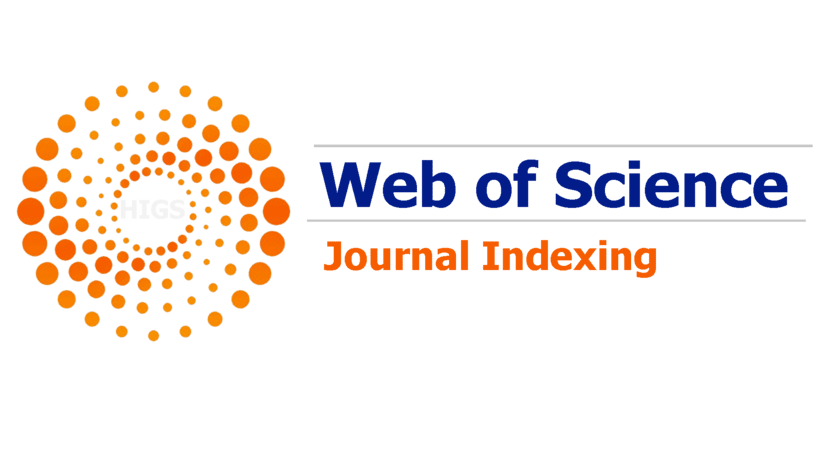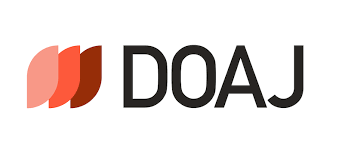Structure and diversity of the fish assemblage in a port area of the coastal zone of the Eastern Amazon in Brazil
DOI:
https://doi.org/10.20950/1678-2305/bip.2024.51.e911Keywords:
Abundance;, Ichthyofauna, Maranhão, Environment, Ecological indicesAbstract
The aim of the present study was to characterize the ichthyofauna of the Coqueiros Strait in the state of Maranhão, Brazil. Sampling was conducted at three-month intervals from February to December 2022 at four sampling points using barrier nets with a 35-mm mesh between opposing knots, measuring 40 meters in length and approximately 6 meters in height. Both abiotic (salinity, temperature, dissolved oxygen, pH, and redox potential) and biotic data (weight, sex, and total length) were collected. A total of 41 species belonging to 25 families were recorded, with the families Ariidae and Sciaenidae being the most represented in terms of abundance distribution. Equitability was assessed, and the abundance-biomass comparison curve indicated an environment without significant degradation. The results indicate that the Coqueiros Strait region is crucial for the development of ichthyofauna in the Golfão Maranhense, highlighting the need for ongoing monitoring and sustainable management practices to protect these vital ecosystems.
References
Araújo, M. L. G., & Cunha, A. C. (2018). Adaptations of Anableps anableps to estuarine environments: A review. Neotropical Ichthyology, 16(3), e180007. https://doi.org/10.1590/1982-0224-20180007
Azevedo, A. C. G., Feitosa, F. N., & Koening, M. L. (2008). Distribuição espacial e temporal da biomassa fitoplanctônica e variáveis ambientais no Golfão Maranhense, Brasil. Acta Botânica Brasílica, 22(3), 870-877. https://doi.org/10.1590/s0102-33062008000300022
Bandeira, A. M. (2016). Um novo horizonte cerâmico no Golfão Maranhense–Ilha de São Luís–MA. Arquivos do Museu de História Natural e Jardim Botânico da UFMG, 25(1-2).
Bartholomew, A., & Baird, D. J. (2009). The role of fish in aquatic ecosystems: a review of the impact of fish species loss on ecosystem functioning. Aquatic Sciences, 71(2), 181-189.
Brasil (2005). Resolução Conama nº 357, de 17 de março de 2005). Retrieved from https://www.siam.mg.gov.br/sla/download.pdf?idNorma=2747
Camargo, M., & Isaac, V. (2004). Food categories reconstruction and feeding consumption estimates for the Sciaenid Macrodon Ancylodon (Bloch & Schneider), and the congeneric fishes Stellifer Rastrifer (Jordan) and Stellifer Naso (Jordan) (Pisces, Perciformes) in the Caeté Estuary, Northern Coast of Brazil. Revista Brasileira de Zoologia, 21(1), 85-89. https://doi.org/10.1590/S0101-81752004000100015
Carvalho, F. G., Oliveira Junior, J. M. B., Farias, A. P. J., & Juen, L. (2013). Uso da curva ABC como método para detectar o efeito de modificação antropogênica sobre assembleia de Odonata (insecta). Interciência, 38(7), 516-522.
Castro, A. C. L. (1986). Aspectos bio-ecológicos do Caranguejo-Ucá, no estuário do Rio dos Cachorros e Estreitos dos Coqueiros, São Luís-MA. Boletim do Laboratório de Hidrobiologia, 7(1), 7-26. https://doi.org/10.18764/
Castro, A. C. L., Castro, K. D. D., & Porto, H. L. R. (2010). Distribuição da assembleia de peixes na área de influência de uma indústria de alumínio na ilha de São Luís–MA. Arquivos de Ciências do Mar, 43(2), 71-78.
Castro, A. C. L., Piorski, M. N., & Pinheiro Júnior, J. R. (2014). Avaliação qualitativa da ictiofauna da lagoa da Jansen, São Luís, MA. Boletim do Laboratório de Hidrobiologia, 14(1), 39-50.
Chao, A. and Chiu, C. H. (2016). A new method for estimating species richness and its confidence intervals. Ecological Applications, 25(4), 1068-1078.
Clarke, K. R., & Warwick, R. M. (1994). Similarity-based testing for community pattern: the two-way layout with no replication. Marine Biology, 118(1), 167-176. https://doi.org/10.1007/BF00699231
Day, J. W., Hall, C. A. S., & Kemp, W. M. (1989). Estuarine Ecology. Wiley-Blackwell.
Falcão, V. A., & Correia, A. R. (2012). Eficiência portuária: análise das principais metodologias para o caso dos portos brasileiros. Journal of Transport Literature, 6(4), 133-146.
Feitosa, A. C. (2006). Relevo do estado do Maranhão: uma nova proposta de classificação topomorfológica. Simpósio Nacional de Geomorfologia; Regional Conference On Geomorphology.
Ferreira, B. P., & Santos, A. B. (2020). The ecological and economic importance of Sciades herzbergii in estuarine fisheries. Marine Ecology Progress Series, 633, 45-56.
Ferreira, H. O. (1988). Contribuição aos estudos das correntes de maré dos estreitos dos Coqueiros e Mosquitos, Maranhão. Boletim do Laboratório de Hidrobiologia, 8(1), 45-52.
Figueiredo, J. L., & Menezes, N. A. (2000). Manual de peixes marinhos do sudeste do Brasil. Vi. Teleostei (5). Museu de Zoologia da Universidade de São Paulo.
Fischer, D. H. (1978). Growing old in America: the Bland-Lee lectures delivered at Clark University. Oxford University Press.
França, M. F., & de Souza, S. M. (2018). Environmental factors influencing the distribution of fish species in estuaries: Implications for management and conservation. Estuarine, Coastal and Shelf Science, 202, 163-172.
Hill, M. O. (1973). Reciprocal averaging: an eigenvector method of ordination: an eigenvector method of ordination. Journal of Ecology, 61(1), 237-249. https://doi.org/10.2307/2258931
Jardim, E. L. (2013). Educação ambiental: para quem ela serve afinal? Uma discussão sobre a resex de Tauá-Mirim e projetos de desenvolvimento no povoado de Porto Grande. Jornada Internacional de Políticas Públicas.
Margalef, G. L., & Arenas, M. A. (2006). ¿Qué entendemos por innovación educativa? A propósito del desarrollo curricular. Perspectiva Educacional, Formación de Profesores, (47), 13-31.
Martins, A. J., Sousa, L. S., & Farias, D. A. (2019). Spawning dynamics and reproductive strategy of Sciaenidae in estuarine environments. Brazilian Journal of Oceanography, 67(3), 167-178.
Melo, A. S. (2008). O que ganhamos ‘confundindo’ riqueza de espécies e equabilidade em um índice de diversidade? Biota Neotropical, 8(3), 1-7. https://doi.org/10.1590/S1676-06032008000300001
Meyer, J. L., & Tate, C. M. (2003). Impacts of urbanization on fish assemblages in urban streams. Environmental Management, 32(1), 115-127.
Pessoa, R. M. C., Jiménez, J. A., Costa, R. M., & Pereira, L. C. C. (2019). Federal conservation units in the Brazilian Amazon Coastal zone: an adequate approach to control recreational activities? Ocean & Coastal Management, 178, 104856. https://doi.org/10.1016/j.ocecoaman.2019.104856
Pinto, B. C. T., Peixoto, M. G., & Araújo, F. G. (2006). Effects of the proximity from an industrial plant on fish assemblages in the rio Paraíba do Sul, southeastern Brazil. Neotropical Ichthyology, 4(2), 269-278. https://doi.org/10.1590/S1679-62252006000200013
Poff, N. L., & Allan, J. D. (1995). Functional organization of stream fish assemblages in relation to hydrological variability. Ecology, 76(2), 606-627. https://doi.org/10.2307/1941217
Porto, H. L. R. (2014). Estudo da diversidade e biomassa de póslarvas e juvenis de camarão do gênero Penaeus no estrito dos Coqueiros. Boletim do Laboratório de Hidrobiologia,5(1), 47-70.
Semensatto Jr., D. L. (2003). O sistema estuarino do delta do São Francisco – SE: Análise ambiental com base no estudo de foraminíferos e tecamebas. PhD Thesis. Universidade Estadual Paulista. http://hdl.handle.net/11449/102865
Silva, C. L., Rosa, S. F., & Lunkes, J. R. (2018). Estudo sobre desempenho ambiental de portos brasileiros. Revista Gestão e Sustentabilidade Ambiental, 7(1), 4-33. https://doi.org/10.19177/rgsa.v7e120184-33
Silva, L. R., Nunes, Y. B. S., Figueiredo, M. B., & Antonio, I. G. (2023). Characterization and spatiotemporal dynamics of the ichthyofauna of two tidal containment zones on the Brazilian Amazon Coast. Boletim do Instituto de Pesca, 49. https://doi.org/10.20950/1678-2305/bip.2023.49.e798
Silva, M. H. L., Torres Júnior, A. R., Castro, A. C. L., Azevedo, J. W. J., Ferreira, C. F. C., Cardoso, R. L., Nunes, J. L. S., & Carvalho-Neta, R. N. F. (2018). Fish assemblage structure in a port region of the Amazonic Coast. Iheringia, Série Zoologia, 108(1), 1-11. https://doi.org/10.1590/1678-4766e2018018
Silva Júnior, M. G., Castro, A. C. L., Saint-Paul, U., & Porto, H. L. R. (2013). Caracterização da ictiofauna em três canais de maré do estuário do Rio Paciência, Ilha de São Luís, estado do Maranhão. Arquivos de Ciências do Mar, 46(1), 5-21. https://doi.org/10.32360/acmar.v46i1.886
Teixeira, S. G., & Souza F. P. W. (2007). Análise de coeficientes de retroespalhamento de imagens multitemporais Radarsat-1 na discriminação de ambientes costeiros tropicais da região da baixada maranhense. XIII Simpósio Brasileiro de Sensoriamento Remoto, 5019-5026.
Valentin, J. L., Saidah, M. F., Tenenbaum, D. R., & Silva, N. M. L. (1991). A diversidade específica para a análise das sucessões fitoplanctônicas. Aplicação ao ecossistema da ressurgência de Cabo Frio (RJ). Revista Nerítica, 6(1-2), 7-26.
Vazzoler, A. E. A. M. (1996). Biologia da reprodução de peixes teleósteos: teoria e prática. EDUEM/SBI.
Viana, L. D. A., & de Souza, S. M. (2017). Estuarine fish communities in Brazil: patterns of diversity and distribution. Marine and Coastal Fisheries, 9(1), 52-66.
Wan, C., Zhao, Y., Zhang, D., & Yip, T. L. (2021). Identifying important ports in maritime container shipping networks along the maritime silk road. Ocean & Coastal Management, 211, 105738. https://doi.org/10.1016/j.ocecoaman.2021.105738
Winemiller, K. O., & Rose, K. (1992). Patterns of life-history diversification in North American fishes: implications for population regulation. Canadian Journal of Fisheries and Aquatic Sciences, 49(10), 219-232. https://doi.org/10.1139/f92-242
Yemane, D. C., John, G. L., & Rob, W. (2005). Explorando os efeitos da pesca nas assembleias de peixes usando curvas de comparação de abundância de biomassa (ABC). Revista Ices de Ciências Marinhas, 3(1), 374-379.
Downloads
Published
Issue
Section
License
Copyright (c) 2025 Athina da Silva Carvalho, Antonio Carlos Leal de Castro , James Werllen de Jesus Azevedo , Leonardo Silva Soares , Caio Brito Lourenço, Alef Fontinele Teixeira, Scarlleth Patrícia Salomão da Silva , Marcelo Henrique Lopes Silva

This work is licensed under a Creative Commons Attribution 4.0 International License.









